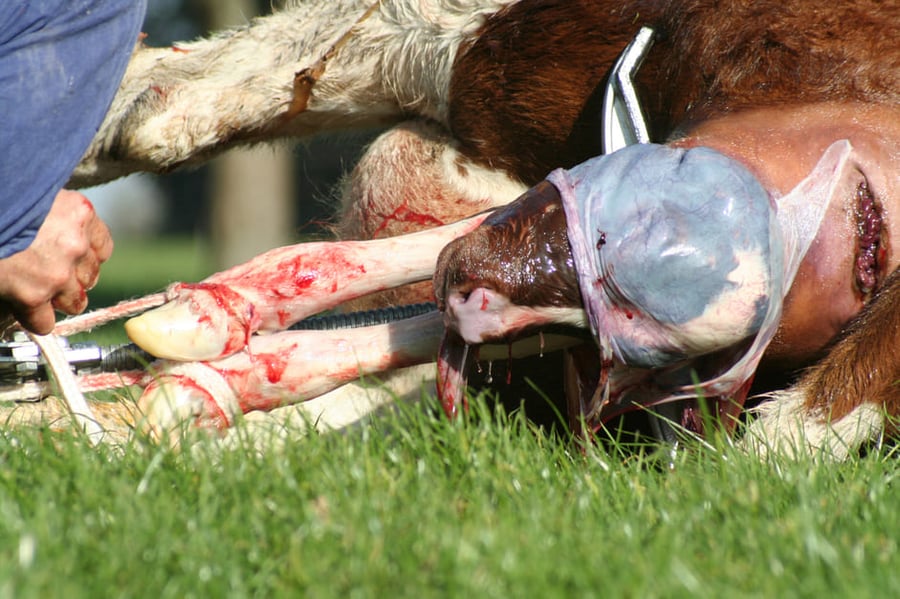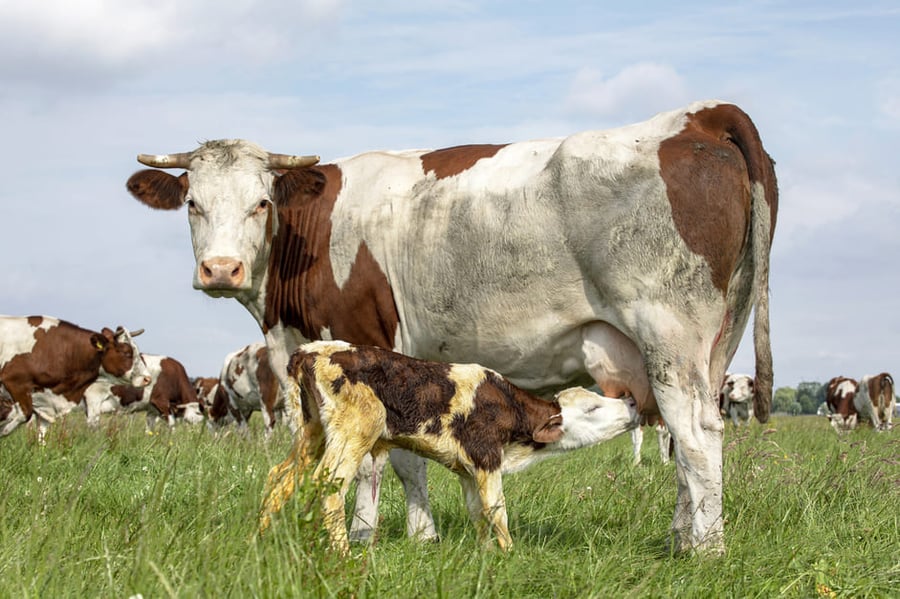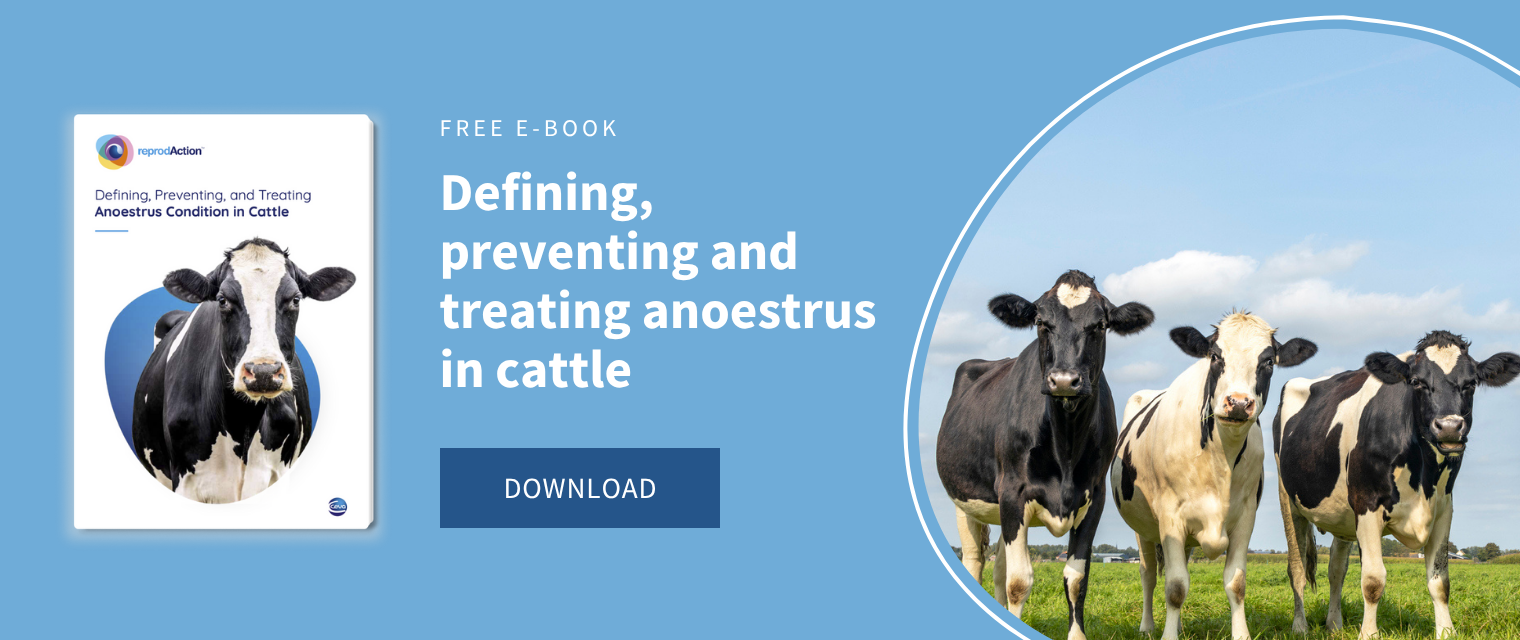Cow calving is a critical event in bovine herds. Not only it is a painful and stressful moment for cows, but it can also negatively affect their health, behavior, and future performance. Moreover, calving difficulty may also lead to higher neonatal mortality and morbidity in their calves (Matamala, Strappini and Sepúlveda-Varas, 2021). Therefore, the aim of proper management practices at calving time is to achieve the delivery of a viable, live calf and the smooth transition of the cow (Mee, 2004).
Before identifying the main problems that might occur during calving, it is important to know and bear in mind the events that define and differentiate the three stages of parturition (Matamala, Strappini and Sepúlveda-Varas, 2021). The first stage comprises the dilatation of the soft tissues of the birth canal, the onset of myometrial contractions, and the rotation of the fetus and its movement to the birth canal. It can start as early as 24h before the expulsion of the fetus, normally lasts 6 h, and it ends with the full dilatation of the cervix and the emergence of the amniotic sac. The second stage, also known as expulsion phase, is characterized by the onset of abdominal contractions, the dilation of the birth canal through the allantoic and amniotic sacs, and the progress of the calf through the birth canal. It can last between 60 – 135 min, and it ends with the delivery of the calf or calves. The third stage is the expulsion of the placenta, which should occur 6 – 12 h after birth.
It should be noted that there are two major problems at calving time: dystocia and perinatal mortality. Dystocia can be defined as difficulty during parturition, and it has been categorized as the most common reason for losing calves (Dargatz, Dewell and Mortimer, 2004). On the other hand, perinatal mortality may be defined as calf death before, during or within 48 h after calving, after a gestation of >260 d (Mee, 2004). Both disorders negatively affect reproductive performance and the profitability of the farm. Consequently, it is important to consider the risk factors that may favor their occurrence and to be aware of the calving management practices that should be followed to minimize these situations.

Risk factors for dystocia and perinatal mortality
Fetopelvic disproportion, fetal maldisposition, incomplete cervical or vulval dilatation, twin calving, uterine inertia and uterine torsion are the main causes of dystocia in cattle. Therefore, the risks factors for each of them should be considered:
- Fetopelvic disproportion: calf weight and heifer pelvic size, influenced by sire, breed, gestation length, and gender, heifer development at insemination, and age, weight and body condition at cow calving.
- Fetal maldisposition: Various types of fetal dystocia due to fetal maldispositions have been reported. It is thought that these are probably due to reduced viability of the offspring. Failure of the fetus to rotate from the intrauterine position to the normal parturient diving position may result in dystocia, they could be influenced by sire, gender, parity and possibly overfeeding prepartum.
- Incomplete cervical or vulval dilatation: associated with periparturient environmental stress and hormonal asynchrony in calving heifers and with confinement, environmental disturbance at calving and preterm births in pluriparous cows.
- Twin calving: influenced by parity, genetic predisposition, high dry matter intake and high milk yield, low progesterone during follicular development pre-ovulation.
- Uterine inertia: it can be primary (associated with milk fever, old age, debility, lack of exercise and preterm calving) or secondary (prolonged calving).
- Uterine torsion: influenced by excessive fetal movement, mechanical factors, and oversized fetus.
Additionally, as mentioned above, dystocia is closely related to perinatal mortality, so several risk factors are common for both: parity, calf birth weight, gender, age at first cow calving, malpresentation, periparturient stress, and uterine inertia. However, perinatal mortality can also occur when having uncomplicated calvings, mostly associated with prematurity, congenital defects, infections, pre-calving nutrition, dysmaturity, twins, prolonged 1st stage of parturition with premature placental separation or prolonged stage 2 with abnormal placentation, nitrate toxicity and accidents.
Management practices at cow calving
Prevention of dystocia and perinatal mortality depends mostly on controlling critical risk factors. It is important to consider that some choices can be made before calving time, such as selecting heifers according to the history of the mothers, performing artificial insemination when the heifer reaches an adequate body weight and selecting sires with proven calving ease.

Additionally, pre-calving measures like having cows and heifers in acceptable body condition (~3 in a scale 1-5) and reducing environmental stress should be put into practice. Environmental stress can be reduced by moving the animals early to adapt to the maternity unit and avoiding unnecessary disturbances. In this case, maintaining visual contact with herdmates would also contribute to diminishing stress by preventing social isolation. It is recommended to move animals within 1-2 days before the predicted time of calving. Nevertheless, if calving has already started, they can be left to calve where they are, as movement would suspend calving behavior for a time.
During calving, the most important step is to provide proper monitoring, particularly at stage 2. Direct supervision should be avoided, as it may cause additional stress. Monitoring every 3-6 hours after the onset of stage 1 is advisable to check for characteristic behavior: restlessness, box walking, tail raising… If the onset of stage 2 is delayed, examinations should be performed to detect problems and indicators for dystocia. Once stage 2 has begun, that is, the amniotic sac or fetal extremities emerge through the vulva, examinations should be discretely carried out to follow the progress, approximately every 30 min. If progress is normal and the fetus presents signs of vitality, intervention should be avoided. However, when progress ceases or the calf begins to show signs of reduced vigor, intervention should be conducted. The time to intervene varies among herds and regions, it has been reported to be from 60 to 90 minutes after the onset of stage 2 (Pearson et al., 2019) and from 2.8 to 3.5 hours for heifers and cows, respectively (Dargatz, Dewell and Mortimer, 2004), as general advice, after 60 minutes without progression in the stage 2 of parturition the cow should be inspected. It is extremely important to perform proper monitoring during calving. Forced early intervention will increase the number of animals requiring assistance and the degree of calving difficulty as well as the incidence of post-partum problems, such as retention of fetal membranes and puerperal metritis, while, on the other hand, a delayed intervention will reduce perinatal vitality and subsequent fertility (Mee, 2004).
Finally, the question regarding when to call the vet should be addressed. In the event of a severe abnormality unlikely to be successfully treated with traction, such as uterine torsion, abnormal fetus, and malpresentation, veterinary intervention is required. The same applies for those situations when the vital signs of the calf are reduced or the attempts to correct maldisposition have failed.
Conclusion
Dystocia and perinatal mortality are the two major problems at cow calving time. The best approach to tackle these issues is to prevent the risk factors that favor them, from the heifer’s birth to her calving. Maintaining proper body condition at parturition, moving animals to the maternity pen in due time, conducting adequate monitoring during stages 1 and 2, and calling the vet when difficulties arise are indispensable management practices to follow if a successful calving is to be achieved.
References:
Dargatz, D.A., Dewell, G.A. and Mortimer, R.G. (2004) ‘Calving and calving management of beef cows and heifers on cow-calf operations in the United States’, Theriogenology, 61(6), pp. 997–1007. Available at:https://www.doi.org/10.1016/S0093-691X(03)00145-6
Matamala, F., Strappini, A. and Sepúlveda-Varas, P. (2021) Dairy cow behavior around calving: Its relationship with management practices and environmental conditions, Austral J Vet Sci.
Mee, J.F. (2004) ‘Managing the dairy cow at calving time’, Veterinary Clinics of North America - Food Animal Practice. W.B. Saunders, pp. 521–546. Available at: https://www.doi.org/10.1016/j.cvfa.2004.06.001
Pearson, J.M. et al. (2019) ‘Benchmarking calving management practices on western Canada cow-calf operations’, Translational Animal Science, 3(4), pp. 1446–1459. Available at: https://www.doi.org/10.1093/tas/txz107
About the author
Federico Randi (Ruminants Global Technical Manager)
Federico Randi is Global Technical Manager for Ruminants at Ceva Animal Health, specializing in cattle reproduction. With a Doctor of Veterinary Medicine degree “cum laude” from the University of Bologna, he focused his career on improving efficiency and sustainability of farmed animals. Randi conducts research on ruminants fertility, using technologies like Timed AI, embryo transfer, and recombinant technologies. His extensive experience includes collaborative projects with over 20 research institutions globally. He earned his PhD at University College Dublin, concentrating on fixed-time artificial insemination and embryonic maternal communication in cattle. Currently, he serves as a Board Member in the Scientific Commission of Animal Physiology for the European Federation of Animal Science (EAAP) as an Industry Representative.
About the author
Dr. Luis A. Quintela (Senior Lecturer in Animal Reproduction)
Professor in the Department of Animal Pathology at the Veterinary Faculty in Lugo, Unvidersidade de Santiago de Compostela (USC). Graduate with a DVM in 1989 and PhD in Veterinary Science in 1996 at the USC. Teaching reproduction and obstetrics, veterinary clinical ultrasound and dairy cattle medicine for graduate and MA students. Adviser in reproduction for a pharmaceutical company since 2007. In the field of investigation, he has participated in and directed several research projects and collaborated with I+D+I programs of several pharmaceutical companies. He has more than one hundred articles of investigation and divulgation and more than one hundred thirty meeting abstracts in national and international congress, he has eight books or book chapters, and he has a patent in exploitation. Most of his works were developed in the field of reproduction in cattle.
About the author
Uxía Yáñez (Predoctoral Fellow)
Assistant Researcher, Universidade de Santiago de Compostela (USC). PhD in Veterinary Medicine and Health by at USC in 2023. Her research activity is focused on ultrasonography and its applications in the reproductive management of dairy cattle, as well as the influence of peripartum diseases on the profitability of the farms. Additionally, her work involves practical teaching sessions about cattle reproduction at the Faculty of Veterinary Medicine in Lugo (Galicia, Spain).

.webp)


Leave your comments here